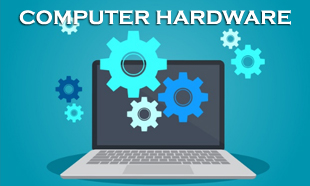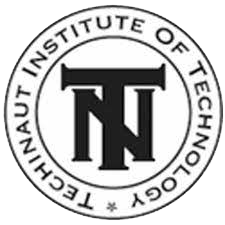0
A Comprehensive Exploration of the "Computer Hardware" Course at DINESH EDUCATION, a Techinaut Institute of Technology Franchise in SEMILIGUDA, ODISHA
In today's digital era, understanding computer hardware is essential for anyone interested in IT or pursuing a career in technology. Dinesh Education, a franchise of Techinaut Institute of Technology, offers a six-month Computer Hardware course aimed at providing comprehensive knowledge and practical skills in computer hardware components, maintenance, and troubleshooting. Located in Semiliguda, Odisha, this course equips students with the expertise needed to build, upgrade, and maintain computer systems effectively. This essay provides an extensive overview of the course curriculum, covering its objectives and each module in detail.
THE OBJECTIVE OF THE COURSE:
The Computer Hardware course at Dinesh Education is designed to achieve the following objectives:
Basic PC Concepts and Terminology: Introduce students to fundamental concepts and terminology related to personal computers. Understanding Internal Components:Provide in-depth knowledge of internal hardware components, including microprocessors, motherboards, memory, storage devices, and expansion cards.
Exploration of External Components:Familiarize students with external hardware components such as system cases, monitors, printers, keyboards, mice, ports, and connectors.
System Care and Maintenance:Equip students with essential skills for PC care, maintenance, and troubleshooting, including dealing with electrical power issues and diagnosing hardware problems.
COURSE CURRICULUM:
PART I: THE BASICS
The Personal Computer:
Introduction to personal computers, their history, evolution, and importance in modern society.
Basic PC Concepts and Terminology:Explanation of essential concepts and terminology, including CPU, RAM, ROM, motherboard, input/output devices, and peripherals.
PART II: INTERNAL COMPONENTS
Microprocessors:
Understanding the central processing unit (CPU), its architecture, types, and features.
Motherboards:Overview of motherboard components, form factors, slots, sockets, and chipset technologies.
Chipsets and Controllers:Explanation of chipset functions and controllers responsible for managing peripheral devices.
The BIOS and the Boot Process:Understanding the BIOS (Basic Input/Output System) firmware and the boot process sequence.
Computer Memory:Overview of different types of computer memory, including RAM (Random Access Memory) and ROM (Read-Only Memory).
Cache Memory:Explanation of cache memory types, levels, and its role in improving system performance.
Hard Disks and Floppy Disks:Understanding hard disk drives (HDDs) and floppy disk drives, their operation, interfaces, and storage capacities.
CD-ROMs and DVDs:Introduction to optical disc drives, including CD-ROMs (Compact Disc Read-Only Memory) and DVDs (Digital Versatile Discs).
Expansion Cards:Explanation of expansion cards such as graphics cards, sound cards, and network interface cards, and their installation.
Video Cards:Overview of video card components, features, and their role in displaying graphics on monitors.
System Resources:Understanding system resources such as IRQs (Interrupt Requests), DMA (Direct Memory Access), and I/O (Input/Output) addresses.
Power Supply and Electrical Issues:Introduction to power supply units (PSUs), voltage regulation, electrical safety, and common electrical issues.
PART III: EXTERNAL COMPONENTS
The System Case:
Understanding the components and layout of the computer system case, including chassis, panels, and cooling systems.
Monitors and Displays:Explanation of monitor types, technologies, resolutions, and display settings.
Printers:Overview of printer types, technologies, interfaces, and printer maintenance.
Keyboards, Mice, and Pointing Devices:Understanding input devices such as keyboards, mice, trackpads, and their functionalities.
Ports and Connectors:Explanation of common ports and connectors used for connecting peripherals, external devices, and networks.
Networks and Communications:Introduction to networking concepts, network devices, and communication protocols.
Audio/Visual Devices:Overview of audio and visual peripherals such as speakers, microphones, webcams, and multimedia devices.
PART IV: SYSTEM CARE AND TROUBLESHOOTING
PC Care and Maintenance:
Guidelines for PC care, preventive maintenance, and cleaning procedures.
Electrical Power Issues:Understanding electrical power issues, surge protection, UPS (Uninterruptible Power Supply), and power management.
Troubleshooting PC Hardware:Techniques for diagnosing and troubleshooting common hardware problems, including system boot issues, hardware failures, and component replacements.
CONCLUSION:
The Computer Hardware course at Dinesh Education offers a comprehensive curriculum covering all aspects of computer hardware, from basic concepts to advanced troubleshooting techniques. By providing theoretical knowledge and practical hands-on experience, the course prepares students for careers in computer hardware maintenance, technical support, and system administration. With a focus on practical skills and real-world applications, Dinesh Education remains committed to empowering students with the expertise needed to succeed in the dynamic field of computer hardware technology.
Lectures = 130 HRS
Practical/Tutorials = 130 HRS
Total = 260 HRS


